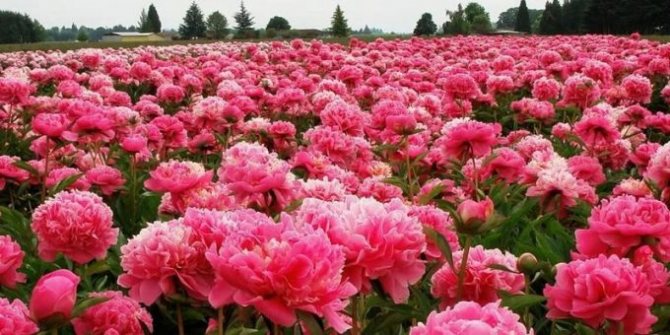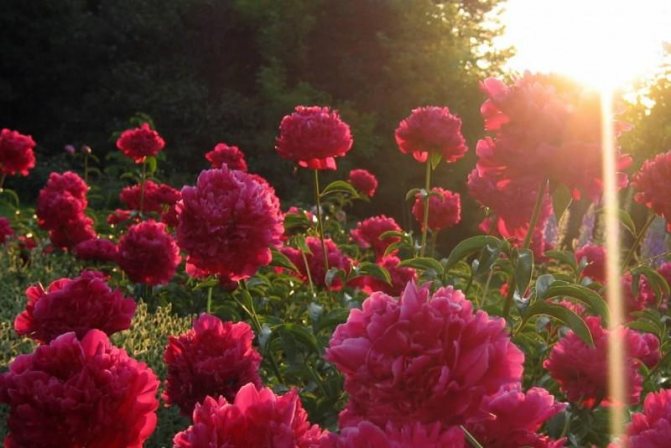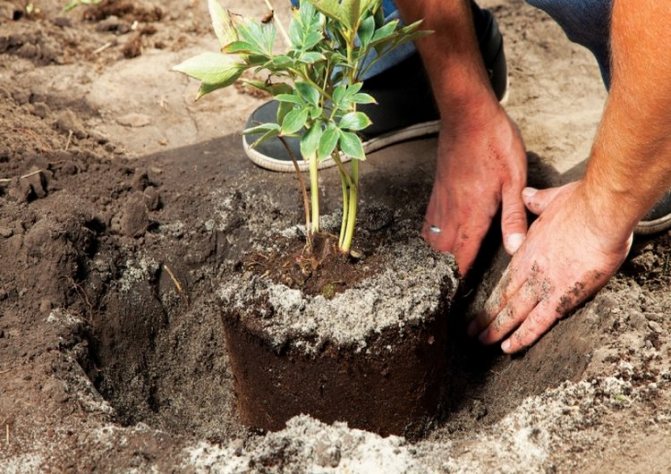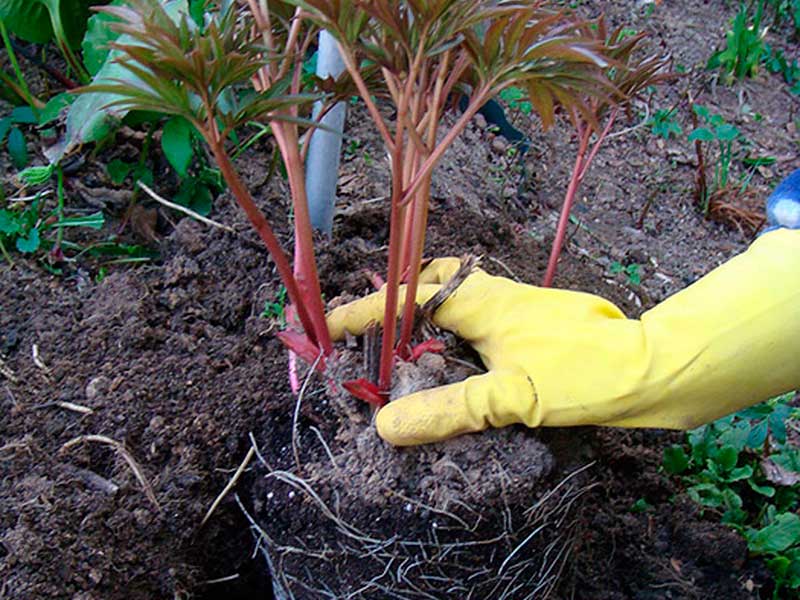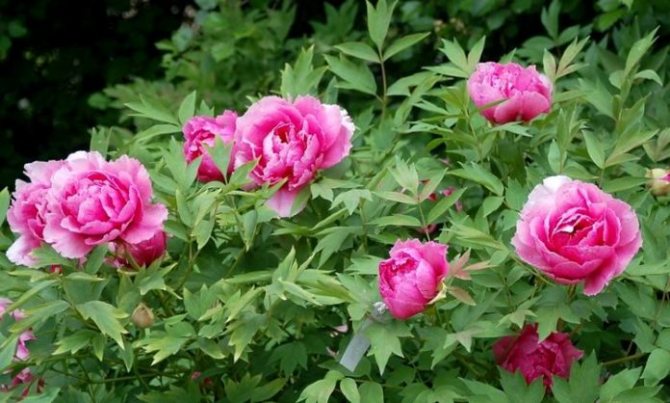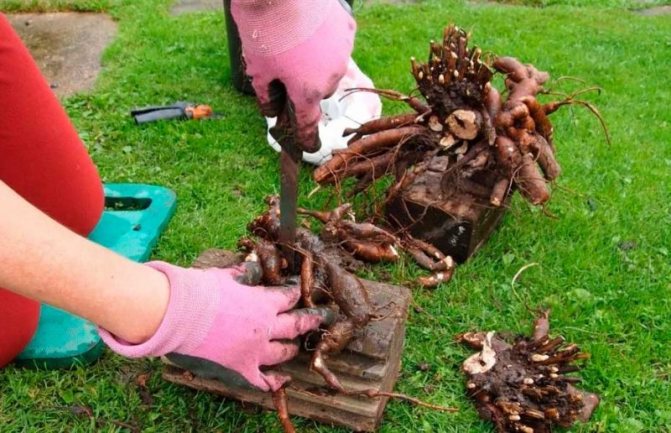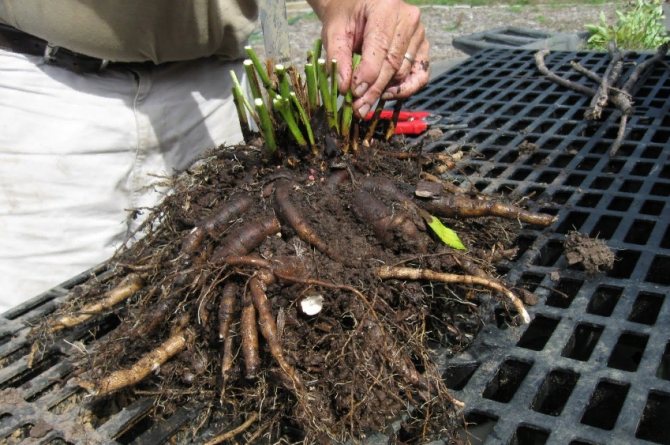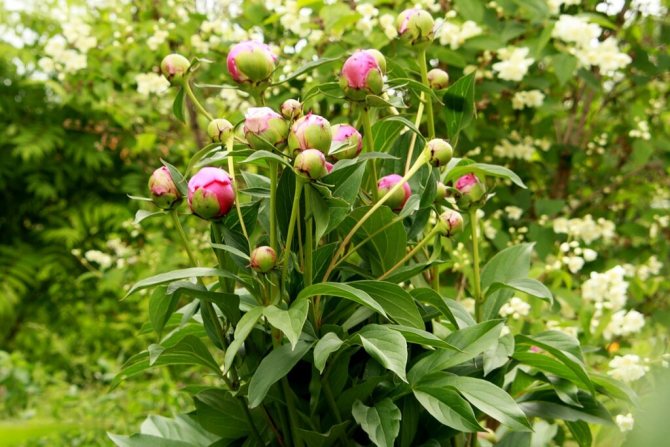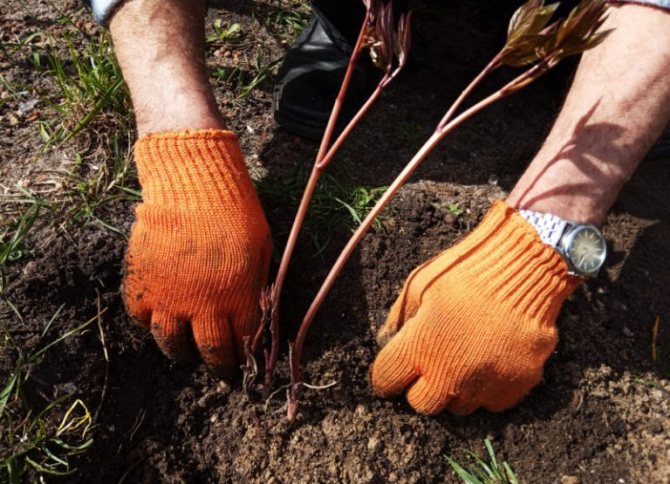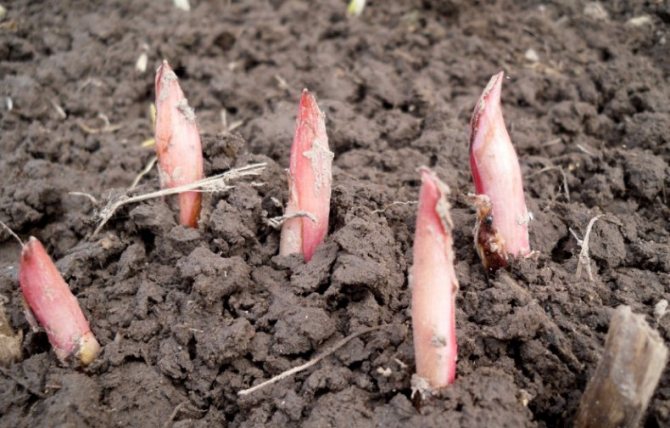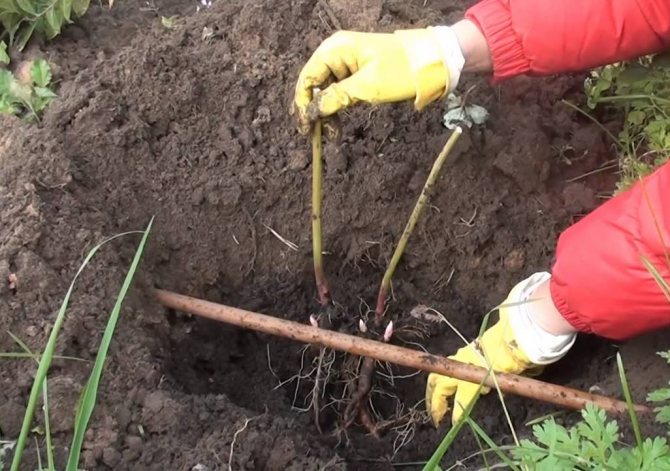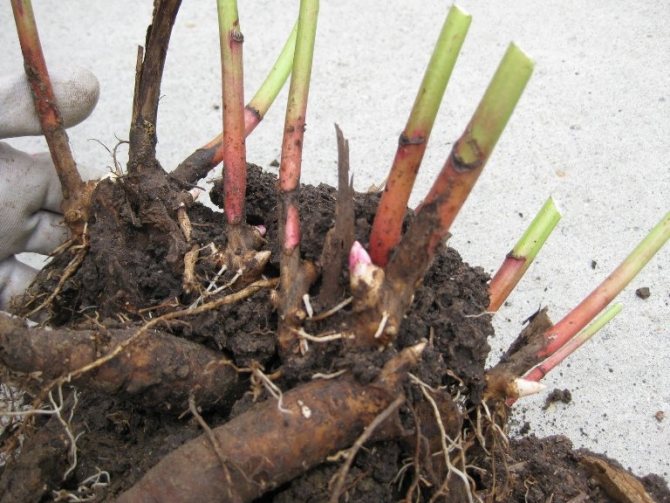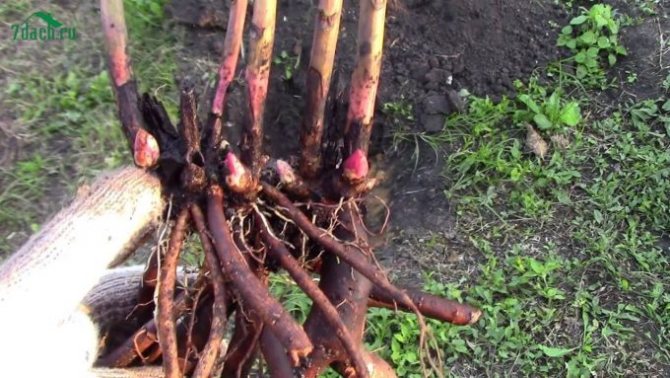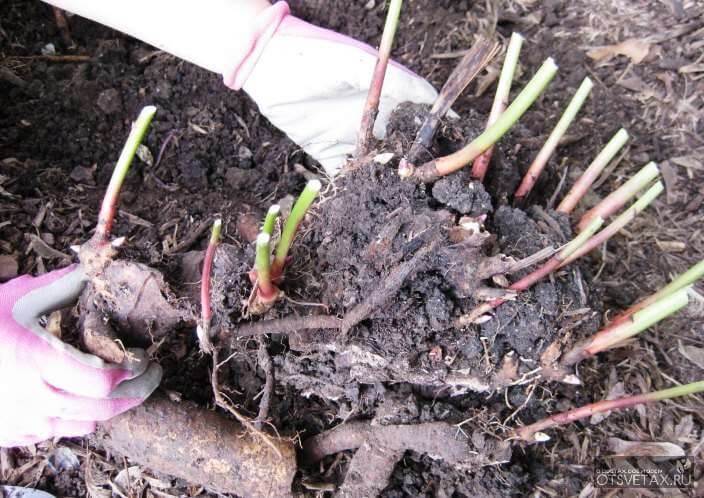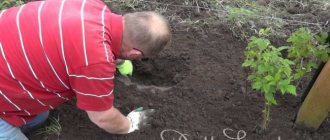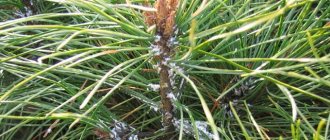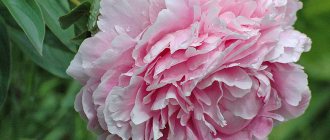Peonies have been growing and blooming in one place for decades. To give the bushes splendor and make them bloom profusely, they need to be replanted from time to time.

To give the peony bushes splendor and make them bloom profusely, they need to be transplanted from time to time. Illustration for this article is used under a standard license <866
Why transplant peonies to another place
Peonies can decorate any site. These are beautiful flowers, bright and lush. So that they do not lose their decorative qualities, peonies are regularly fertilized, watered, tied up if necessary and, of course, transplanted. The transplant procedure is necessary for many reasons.


Peonies can decorate any area
- The bush is rejuvenated and therefore flowering is activated.
- The quality of the land is improving.
- The plant is much less likely to get sick and is exposed to pests.
In addition, due to timely transplantation, root diseases can be detected in time and the plant can be cured.
When can peonies be transplanted
Check out these articles as well
- Bee wax
- Onion variety Red Baron
- Broiler guinea fowl
- Dipladenia Flower (Mandeville)
Despite the fact that peonies need to be transplanted, this is often not worth doing. Herbaceous peonies are transplanted about once every 4-5 years, tree-like peonies can be grown up to 6 years, although they grow well in one place and up to 15 years, if you provide them with full care. If you transplant peonies more often, there will be no positive effect from the procedure, except perhaps harm.
And when to transplant peonies? Gardeners recommend replanting peonies in the fall. At this time, they quickly take root in a new place and bloom next year. If more specific dates are needed, then the best time is the beginning of September. You can also navigate by region. In the southern parts of Russia, you can transplant in October. If the region is Medium, then it is better to finish all the work in September. And in the northern parts of the country, it is worth replanting peonies in August.


Herbaceous peonies are transplanted about once every 4-5 years, tree peonies can be grown up to 6 years
Important!
From the moment of transplantation to the first frost, at least a month should remain, otherwise the peony will not have time to take root in a new place.
In the spring, transplanting peonies is not the best idea. This is the time when the bushes begin to develop, to grow. The transplant will be additional stress for them. Usually, after a spring transplant, peonies get sick and grow slowly. So in the spring it is worth carrying out the procedure only as a last resort and only when it is cool outside, that is, no later than April.
As for summer, this is the time of flowering of peonies, when they form buds for the next year. So at this time, the transplant is done only when there is a threat that the plant may die in its old place. But you need to understand that a summer transplant can greatly weaken the peony and it will take a long time to recover.
Why do you need a transplant
Peonies are considered centenarians. Sometimes it turns out that even non-transplanted bushes can live and bloom for tens of years. But this happens on rare occasions. Most often, after 5-7 years, peonies begin to bloom worse and smaller, they become smaller every season. This happens because the root neck is aging, hollows form inside, goose bumps, slugs and worms happily settle in them. And this clearly does not contribute to the development of the plant.
The buds are laid deeper and deeper every year, as a result, the growing season is slower. Peonies bloom less or stop blooming altogether. To avoid this, it is necessary to transplant the bushes to a new place in time.
How to choose the right site for peonies
When it is necessary to transplant peonies for one reason or another, a new place is being sought for a flower that will be to its liking. But where can you plant a peony? This culture grows well in a lighted place, where there is a lot of light and warmth. Partial shade is also a good option, but it is important that sunlight hits the plant for at least some part of the day. It is best if the sun illuminates the bush in the morning and evening, and in the afternoon it will be in the shade.
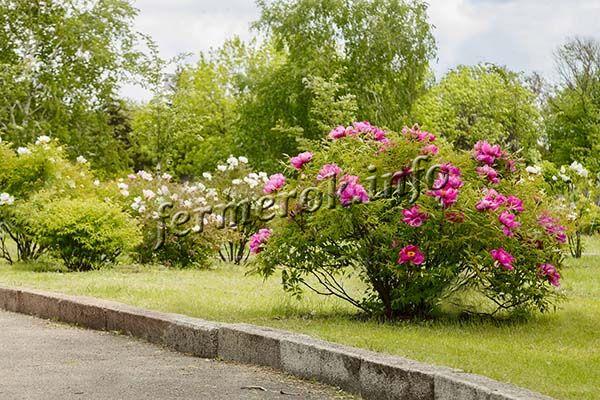

Peonies grow well in a lit place where there is a lot of light, heat
Important!
If you plant a peony in the shade, where there is no sun at all, the stems will begin to stretch strongly, and the inflorescences will become smaller. In some cases, flowering stops altogether.
It is desirable that in the area allocated for peonies there is protection from drafts, strong winds (protection is needed, first of all, from the north side). The soil must be loose, not waterlogged, otherwise the root will quickly rot. If the site is located in a lowland or the groundwater level is above 70-80 cm, you can equip a high bed for peonies. The acidity of the earth should be neutral. Loam or sandy loam is preferred for peonies.
Types of peonies photo
- Japanese peonies have the most delicate buds, similar to fluttering butterflies. The main advantage of this type of peonies is that the bushes look neat and do not disintegrate: the load on the buds is comparable to their strength.


- Non-double - flowers of this group are strong, with straight stems. Petals are not large, located in 1-2 rows. There are up to 10 petals in one bud.


- Anemonic - there are 5 or more petals in the bud, which are arranged in 2 or more rows. Modified stamens, located in the center of the bud.
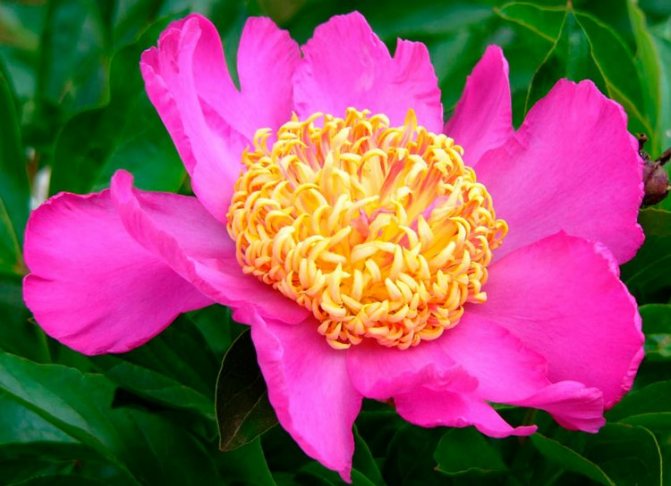

- Terry is one of the most common and popular groups of peonies. These varieties are characterized by a large number of colors, and huge peduncles, because of which the plant sinks.
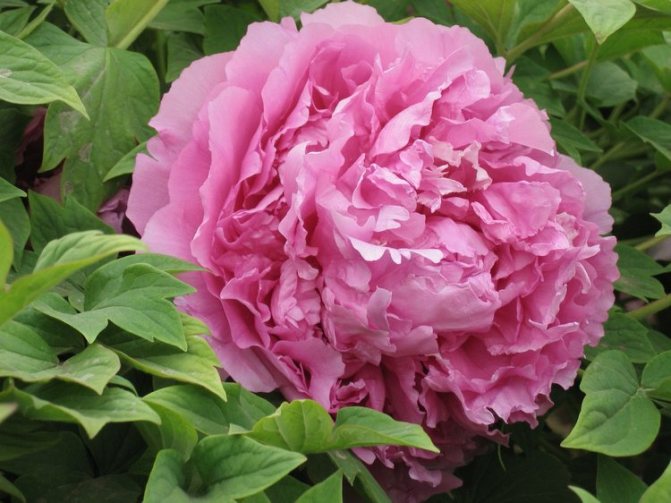

Planting pit preparation
We recommend reading our other articles
- The benefits and harms of cherries for humans
- Description of Risen rabbits
- Tomato variety Golden heart
- Raspberry variety Yellow Giant
The preparation of the planting pit begins a month or at least 2 weeks before the procedure. The dimensions of the pit are 60 cm deep and 55 cm in diameter. If several peony bushes are planted at once, then a distance of 1-1.5 meters must be observed between them. At the bottom of the pit, drainage is immediately poured, in a layer of 10-15 cm. It can be expanded clay, pebbles, crushed stone or similar material. A little simple sand is poured on top. And the pit is left before planting.
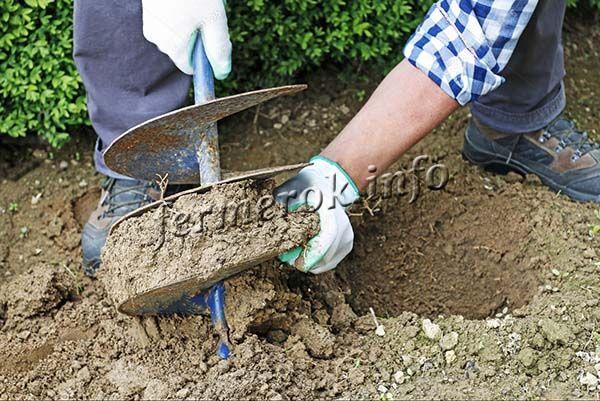

The preparation of the planting pit begins a month or at least 2 weeks before transplanting.
When digging a hole, it is necessary to set aside the top layer of earth. A bucket of humus or compost, 90 g of superphosphate, 65 g of potassium sulfate and a glass of wood ash are added to it. Now it is important to mix the resulting mixture well. This is the planting soil. It must be wrapped in plastic and left until planting.
How to plant a plant correctly?
The basic structure of the roots of all types of peonies is the same, so the process of planting them is identical. After trimming the aboveground part, the bush is dug in, removed from the ground and left to dry for a day.
Dividing the bush
When planting a peony, healthy, young areas are separated from the root. They can be distinguished by their light shade. The rhizome is cut with a sharp, disinfected knife or shovel. In some varieties, the roots are so powerful and firm that you have to wield an ax.
General recommendations for the procedure are as follows:
- Each division should have 3-4 large buds.Although sometimes parts of the root with one viable bud take root perfectly.
- Old and damaged parts are cut out. Places of cuts are washed with a weak solution of potassium permanganate and powdered with charcoal.
- If traces of pests are visible on the rhizome, it is additionally treated with an insecticide.


Important! When dividing the root, small parts often fall off from it without visible rudiments of growth points. They should not be thrown away, since dormant buds can be activated during planting, and full-fledged bushes will grow from them, capable of blooming in 3-4 years. "Stumps" of medicinal peony take root well, worse - milk-flowered.
Do I need to dig it up?
To separate and plant a part of the bush in a separate hole, it is not necessary to completely dig out the rhizome of the peony. For reproduction, you can use the pruning method:
- Soil is dug from the bush so that 6-8 cm of rhizomes are exposed and the buds appear.
- With a shovel, cut off the top of the rhizome with buds (you need to hold the tool horizontally). In this case, the main taproots remain in the ground.
- The separated part is cut in such a way that at least 3 buds remain on each division.
- Each division is planted in a separate pit. Small parts are placed vertically in the pit, large ones at a slight slope. The distance from the kidneys to the surface of the kidneys should be 5-7 cm.
- The part of the rhizome remaining in the old place will give new buds, and in 1-2 years the plant will fully recover.
Advice! Planting holes for separated parts are prepared 2-3 days before the planting procedure. During this time, the dug soil will sink, and the planted rhizome will be at the required depth.
Peony transplant is a simple procedure, but it also requires adherence to recommendations and technology. Flowering in the next season directly depends on the correct division of the bush and the care of the parts planted in separate pits.
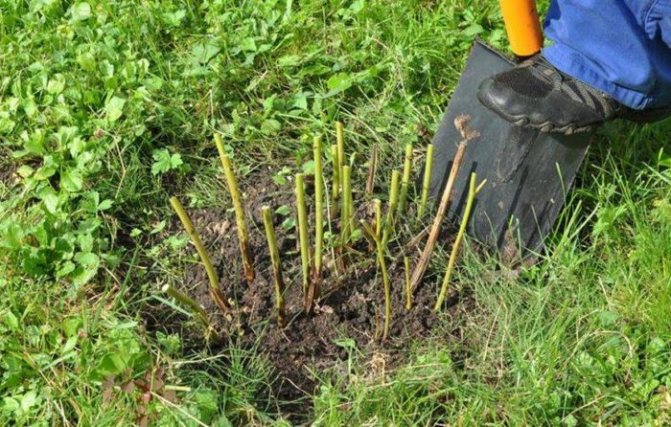

5 / 5 ( 1 voice)
How to transplant peonies to another place
Having decided in time when to transplant peonies, you need to start the procedure by digging out a bush. If the transplant is in autumn, then before the procedure, the peonies are pruned, if it is spring or summer, then there is no need to prune the pagons. The bush is dug in from all sides and taken out of the ground. To do this, you need to swing it to the sides and pull it out along with the earth, which will need to be robbed.
Important!
When digging up peonies, some of the roots, as a rule, break off. Even many specialists cannot avoid this, so you should not worry about this.
To divide the rhizome (this is also important when transplanting), it is necessary to wash the root with water so that it can be clearly seen. After washing, the root is left in the shade for 3-6 hours to make it more elastic. Then you can start dividing the root. It is best to divide with your hands, but you can also use a sharp knife. When dividing, you should get several parts. Each part should have 3-5 buds, the length of the roots is 15-20 cm. If the roots are too long, they need to be pruned. So that the delenki quickly take root in a new place and do not get sick, they can be dipped for half an hour in a solution of the drug "Maxim", "Heteroauxin" or "Kornevin".


After digging, the root must be washed, left in the shade for 3-6 hours to make it more elastic
To plant the bushes, it is necessary to pour the planting soil with a slide on the sand in the pit and install the seedling. It is very important that the growth points are buried no more than 5 cm if the ground is light, and if it is heavy, then 3-4 cm. With a deeper depth, the peony may simply not bloom. Now the root is covered with fertile soil, after which the soil is compacted with your hands so that there are no voids between the roots and the soil.
Important!
When dividing a bush, it is worth examining the roots for damage. If there are any, they are cut to a healthy tissue and the cut is sprinkled with wood ash.
The last stage of transplanting a peony to another place is watering. If the ground under water sinks strongly, it can be filled up.Mulching is also necessary, especially when it comes to autumn planting. You can mulch a peony with peat, sawdust or simple hay.
Top dressing of peonies in spring
Feeding peonies in spring is an important component in caring for this plant. In total, gardeners are advised to carry out at least 4 dressings only during the growing season.
At the moment when the growth of young shoots begins, peonies need to be fed with an ammonium nitrate solution. We prepare the solution: 10 liters. water 15 gr. nitrate granules. It is recommended to fertilize with nitrate once every 2 weeks before flowering.
It is necessary to feed peonies with organic fertilizers in the spring by a root method. To do this, stir mullein or bird droppings in a ratio of 1:10 and 1:25, respectively.
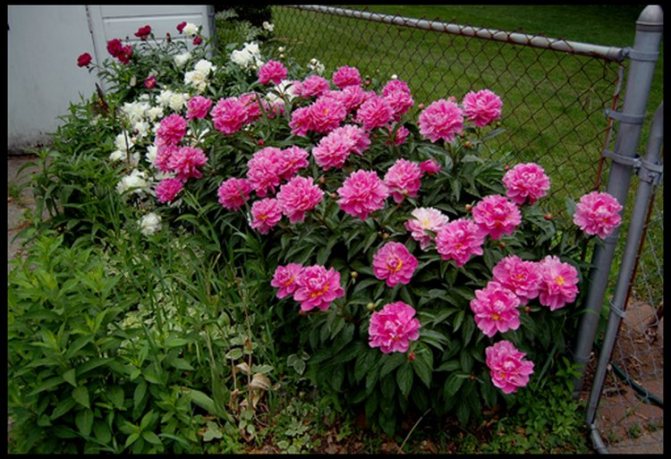

As you can see, transplanting peonies in the spring is generally not much different from transplanting peonies in the fall. The main thing is to observe the following rules: choose the right place for transplanting peony bushes, provide regular watering and adhere to the correct composition of spring feeding of peonies, and then your handsome peonies will certainly delight you with their flowering for more than one year. Not only the appearance of peonies fascinates the hostesses, but also their aroma, because it’s nice to go out into the garden, where the pleasant aroma of these wonderful flowers blows.
Peony care after transplant
In order for the peony to take root quickly after transplantation, you must first leave it alone for 1-2 weeks, and then provide it with normal care. First of all, this is watering. As the land dries up, it is important to add water. In autumn, this procedure is rarely done, as there is usually enough rain. But in spring and summer this is very important. The land where the peony grows should always be loose, without weeds. So weeding is very important.


For the winter, you need to cut the peony, spud and shelter from frost
If the transplant procedure was problematic or the peony was transplanted in the summer, it is worth cutting off all flower stalks a year after planting so that the peonies grow a powerful root. Top dressing is not needed in the next 2-3 years after transplanting. The plant will have enough nutrient mixture that was introduced into the soil before transplanting.
For the winter, pruning of a peony is carried out, which was planted in spring, summer. And after that, the peony takes refuge from frost. You can cover it with fallen leaves, peat, hay or something similar.
Further care at the summer cottage
Caring for peony bushes does not require special skills. It is enough just to water, loosen and protect from diseases.
See also
Description and characteristics of peony varieties Red Charm, cultivation and careRead
Watering
Bushes need regular watering, especially during the budding period and during the flowering of inflorescences. Also, special attention is paid to irrigation in September. This is the time of secondary growth of the root system. For watering, you will need 2-3 buckets per bush.


Loosening
From time to time around the bushes the soil is loosened and weeds are removed. This will help provide the flower's root system with the necessary amount of oxygen, which is needed for the full development of the plant.
Garter
During the rains, the stems of large-flowered peonies often lie down. To prevent this, the bushes are tied up. To do this, stakes are driven in around the plant and a wire or rope is pulled.
Diseases and pests
Like most plants, peonies are susceptible to various diseases and pest attacks. Most often, peony bushes are faced with such diseases.


Gray rot
It belongs to the most dangerous diseases, as it affects all parts of the plant. First, young shoots begin to wither, and then mold appears. The affected parts of the bushes are cut and destroyed. For the winter, the shoots are cut to the very root, and with the arrival of spring, they are treated with Bordeaux liquid.
Powdery mildew
Mature bushes are more likely to suffer from this disease. A light bloom appears on the top of the foliage.Powdery mildew does not do much harm to peonies, but it still needs to be treated. To do this, the flowers are treated with a solution of soda ash, adding laundry soap to it. One and a half weeks later, another treatment is carried out.


Foliage mosaic
This is a viral disease that manifests itself as spotting on the foliage of flowers. Light green stripes alternate with dark green stripes, which resembles a mosaic. With a disease called "mosaic", necrotic specks may appear on the foliage. This disease is incurable, so diseased plants are removed from the site as quickly as possible and burned. Of the pests on peonies are found.
Ants
These insects are attracted by the sweet syrup, which is emitted by the flower buds. In the hunt for him, goosebumps eat up foliage and petals. In order to ward off insects from the bush, it and the soil around it are treated with repellents.


Bronzovka
It is a beetle with a mother of pearl back. He eats flower petals. Dangerous for peonies from early May to August. To get rid of beetles at the end of summer, loosen the soil under the bush. During this period, the process of pupation of the insect takes place. In the morning, parasitic beetles are harvested by hand. During the laying of buds, the bushes are sprayed with insecticides.
Mistakes when transplanting peonies
Often, after transplantation, the peony simply does not bloom or stops developing. Many gardeners decide that transplanting a flower has a negative effect, and the procedure is unnecessary, and therefore you can no longer think about when to transplant peonies. But in fact, the reason is mistakes, which gardeners often make when transplanting peonies.
- The main reason for the lack of flowers is the deep root deepening. If the planting is too deep, he will release pagons, but may not give flowers. So the only option is to dig out the root and plant it again, but already to a depth of 3-5 cm, no more! It is also dangerous to place the root higher, it can freeze out in winter!
- Bad place to grow peonies. Shade, increased acidity of the earth, waterlogging, high groundwater levels - this can cause the absence of peduncles. To save the plant, you need to transplant again, but to a suitable place.
- If the share was small, then it will begin to bloom only 3-4 years after planting.
- Improper care can also be the reason for the lack of flowers.
- Finally, the wrong transfer time. When to transplant peonies, you need to decide in advance and carry out the procedure on time. If you are late with the autumn planting, the root can freeze out, if you transplant in the spring, the flower can take root for a long time and not give flowers this year. Well, the summer transplant is a huge stress, from which the peony can leave for several years!
Transplanting a peony to another place can improve the development of culture. This is an important part of grooming that cannot be neglected, even if time is short. Only with timely transplants, the peony will delight with regular flowering, and the buds will give large, bright and fragrant buds. But, in order not to harm the flower, you need to know when to transplant peonies and do it strictly according to the rules.
Useful Tips
Here are some more tips from my personal experience, gained over several years of planting my favorite peonies:
- Work can be started when stable temperatures exceed 10 degrees Celsius.
- Treelike peonies, which grow in nutrient-enhanced loams, have a long and colorful bloom.
- A shady area, increased soil acidity and an excess of nitrogen fertilizers lead to the death of a perennial.
- A transplant should not be carried out more often than once every 5 years.
- When processing a plant, you can use biological growth stimulants.

